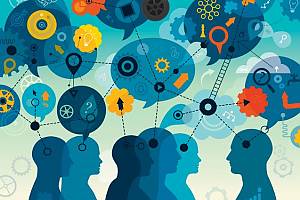Abstract:
Traditional medicine takes different forms in different regions, and the
documentation and preservation of traditional medical practices and
knowledge is part of our efforts for safeguarding intangible heritage and
recognizing and promoting cultural diversity. In the same vein, UNESCO
has inscribed the Andean cosmovision of the Kallawaya in Bolivia, a
body of ritual knowledge and artistic expressions intimately linked to
religious beliefs, which also include traditional healing practices, on the
Representative List of the Intangible Cultural Heritage of Humanity.
Traditional medicine, which includes healing practices and knowledge, could be considered more than just static traditional knowledge,
as it helps us lead healthier lives naturally. It is also important to note
that references to safeguarding traditional healing practices is not just
included in the 2003 Convention but also in the Convention on Biological
Diversity (1992), the UNESCO Universal Declaration on Cultural Diversity
(2001), and the United Nations Declaration on the Rights of Indigenous
Peoples (2007). By recognizing and preserving traditional healing practices for therapeutic purposes in areas beyond the reach of modern
medicine, we can help ensure our universal rights. According to the
common definition by the World Health Organization, traditional medicine is “the sum total of the knowledge, skills, and practices based on
the theories, beliefs, and experiences indigenous to different cultures,
whether explicable or not, used in the maintenance of health as well as
in the prevention, diagnosis, improvement or treatment of physical and
mental illness.” As such, traditional practices cannot be easily defined
without reference to diverse social and cultural contexts and knowledge.
Today, traditional medicine is facing the threat of extinction. Natural
medicinal materials and herbs are disappearing due to climate change,
desertification, and deforestation. Furthermore, traditional medicine
is losing ground to modern medicine, as it is deemed non-scientific or
unstandardized. Even if traditional medicine has a scientifically proven
treatment for a certain disease, it is easily distorted in the commercialization process and often undermines the sustainability of communal
life. For instance, when a naturopathic or dietary treatment that has
been passed down in a community becomes known to be effective for a
Foreword
Kwon Huh
Director-General, ICHCAP
disease, the therapeutic materials used in the treatment are recklessly
consumed regardless of the communal background, which can lead to
destroying the community and the surrounding environment.
Traditional medicine should coexist with modern medicine as they
are complementary. Traditional medicine plays an important role as a
means of treatment for people outside the reach of modern medicine. It
also gives new hope to those suffering from diseases that modern medicine cannot yet cure. In some developing countries, traditional medicine
is easily accessible and obtainable at little or no cost and thus is much
more popular than modern medicine. Traditional medicine also embodies wisdom that has been transmitted through generations based on our
ancestors’ perceptions and experiences about their lives and environment. Traditional medicine, therefore, should be recognized as valuable
intangible heritage worthy of safeguarding.
This book begins with the introduction to traditional medicine around
the world and describes the relations between traditional medicine as
traditional knowledge and the 2003 Convention as well as discussions
on safeguarding traditional medicine. The book was jointly published
by ICHCAP as the content publisher and #Heritage Alive as the editor.
As a UNESCO category 2 centre established in accordance with the 2003
Convention, ICHCAP has been engaged in publication projects for intangible heritage, including the ICH Courier, to increase the visibility and
public awareness of intangible heritage in the Asia-Pacific states. It is
always a great pleasure for ICHCAP to work with NGOs enthusiastically
working in the field for safeguarding intangible heritage.
ICHCAP considers this publication a new challenge and a major step
forward, as it is aimed to introduce traditional medicine of the world
beyond the Asia-Pacific region. It is also noteworthy that the book will
be first presented during the twelfth session of the Intergovernmental
Committee for the Safeguarding of the Intangible Cultural Heritage to
be held in Jeju, Korea. In this regard, we would like to thank the editorial board of #Heritage Alive led by Editor-in-Chief Eivind Falk and
the members of ICHCAP for their contributions to the successful publication of this book.
We hope that this book helps readers discover knowledge about traditional medicine and the value of endangered traditional knowledge
and also understand the need for the sustainable safeguarding of the
environment that surrounds us.
Themes:
Knowledge and practices concerning nature and the universe, Oral traditions and expressions, Social practices, rituals and festive events, SDG 3: Good Health and Well-being, SDG 5: Gender Equality, SDG 10: Reduced Inequalities, SDG 16: Peace, Justice and Strong Institutions, Indigenous peoples
Country:
Bangladesh, Burkina Faso, India, Latvia, Mongolia, Portugal, Republic of Korea, Syrian Arab Republic, Türkiye, Uganda, Viet Nam
